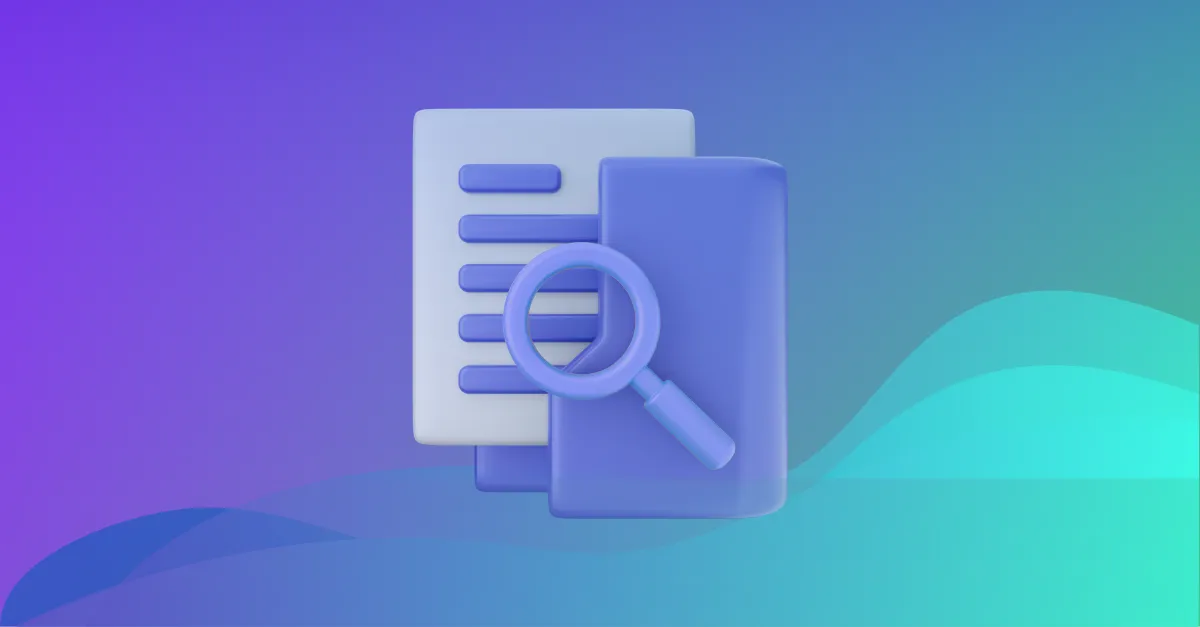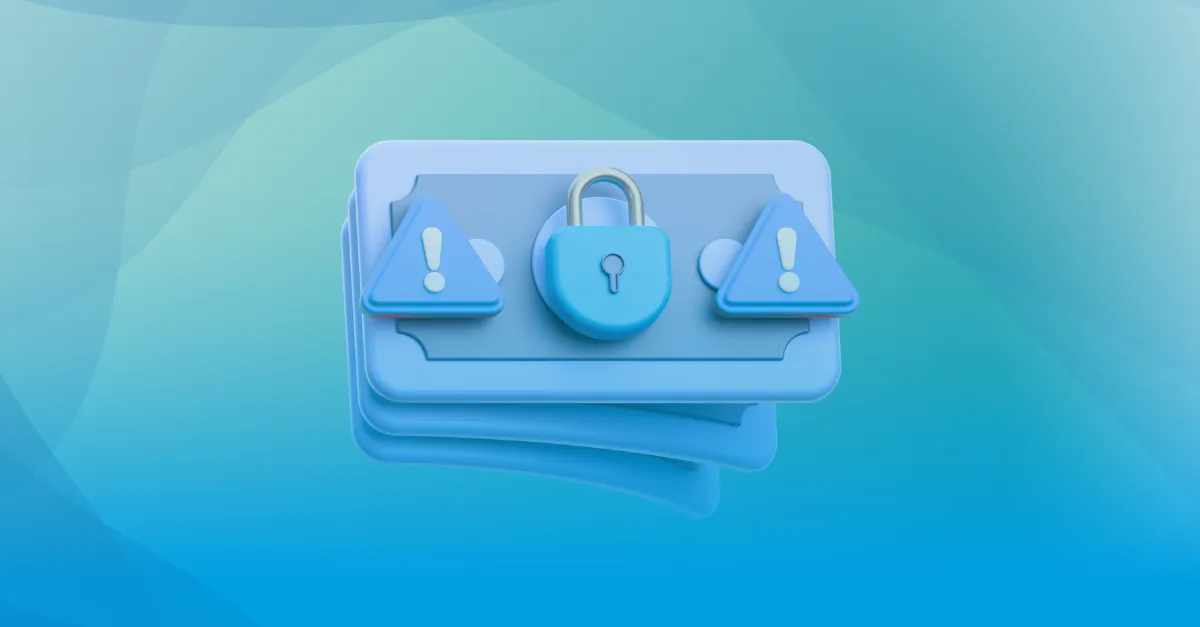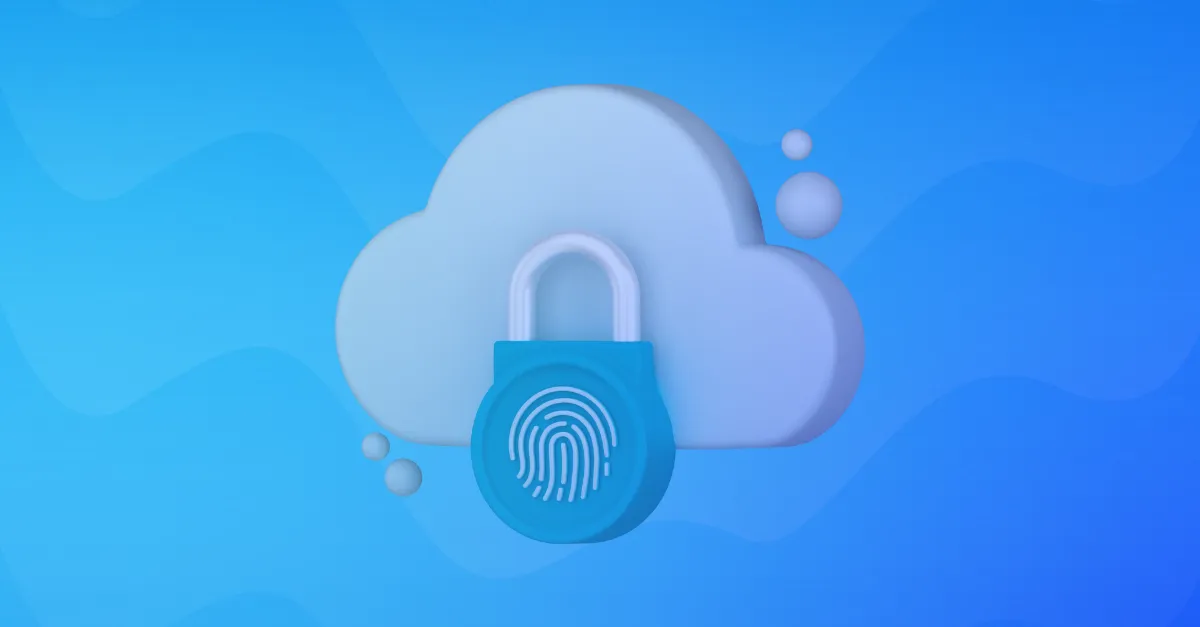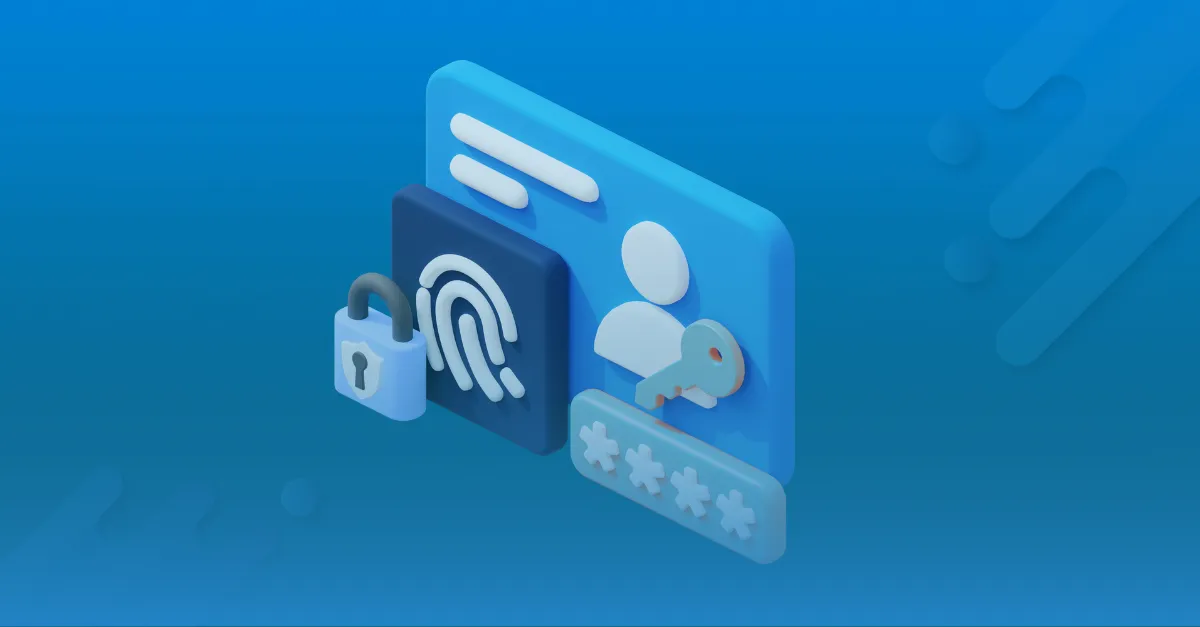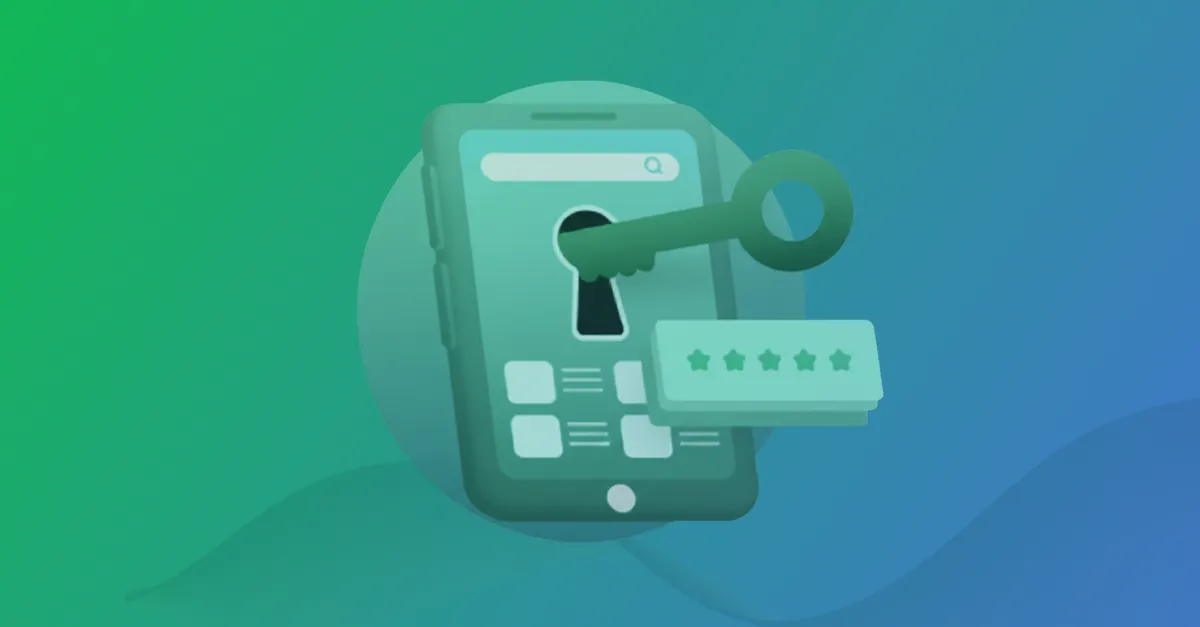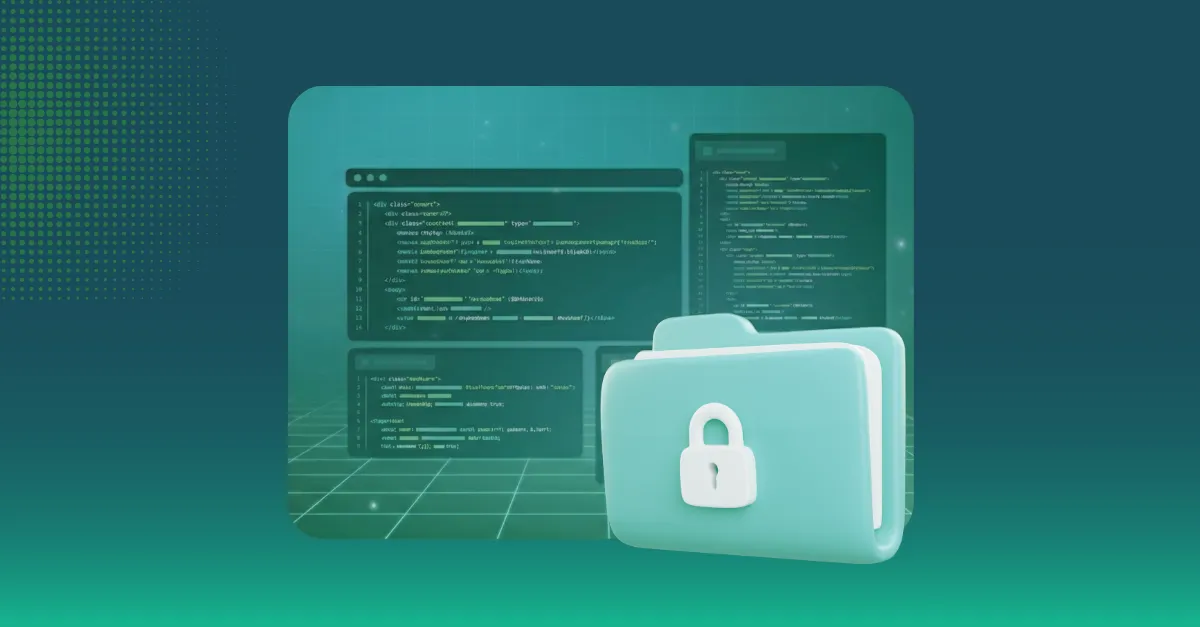![Top Qualys alternatives and competitors [September 2025] Top Qualys alternatives and competitors [September 2025]](https://beaglesecurity.com/blog/images/top-qualys-alternatives-840.webp)
Introduction: Why look for Qualys alternatives?
For years, Qualys has been a recognized major player in cybersecurity, offering a wide portfolio of solutions that includes vulnerability management (VMDR), application security (TotalAppSec), cloud security posture management (CSPM), and patch management. Its comprehensive suite has made it a go-to choice for many large enterprises.
However, in 2025, the evolving security landscape is causing organizations to rethink their reliance on a single vendor. Security leaders and their teams are increasingly seeking Qualys alternatives due to several key factors:
Budget constraints that make expensive, all-in-one platforms less attractive.
Tool complexity and the desire for more modern, intuitive user interfaces.
The rise of developer-friendly and cloud-native solutions that offer better integration and faster value.
A growing need for platforms that integrate smoothly into CI/CD pipelines and support modern DevSecOps workflows.
This blog explores the best Qualys alternatives in 2025, broken down by category: application security, cloud security, vulnerability management, and patch management. By examining their unique strengths, pricing models, and customer feedback, you can make an informed decision about which platform best fits your organization’s specific needs.
Best Qualys alternatives TL;DR (quick comparison table)
Here is a quick reference table that compares some of the strongest alternatives to Qualys across its main product categories.
| Software | Starting price | Strengths | Best for |
|---|---|---|---|
| Beagle Security | Starts at $119 | AI-powered, intuitive UI | Modern web app testing |
| Invicti | $37,000+/year | Proof-based accuracy | Enterprise DAST needs |
| Orca Security | $7,000+/month | Agentless, 100% visibility | Cloud-native security |
| Prisma Cloud | $18,000+/year | Complete CNAPP | Enterprise cloud security |
| Rapid7 InsightVM | $1.93/asset/month | Real-time prioritization | Vulnerability management |
| Tenable | $2,275+/year | Comprehensive coverage | Multi-environment exposure |
| PDQ | $12+/device/year | Windows-focused, simple | On-premises patch management |
| NinjaOne | $1.50+/endpoint/month | Multi-platform, excellent support | Comprehensive endpoint management |
Application security (Qualys TotalAppSec alternatives)
Introduction to Qualys TotalAppSec: Pros and limitations
Qualys TotalAppSec is a key part of the company’s security portfolio, designed to provide dynamic application security testing (DAST) and broader application security capabilities. It helps organizations identify common vulnerabilities in their web applications and APIs, integrating this data into the broader Qualys ecosystem for centralized risk management.
Strengths of Qualys TotalAppSec include:
Broad security portfolio: It is part of a wider suite of tools that includes VMDR, CSPM, and more, offering a single-vendor solution.
Established player: Qualys has long been recognized as a major name in the vulnerability management space.
Limitations include:
Rigid scanning methods: The platform often follows more traditional and less adaptive scanning methods compared to newer, AI-driven tools.
Complexity and usability: Some users find the platform complex and not as user-friendly as modern alternatives, which can hinder adoption.
Less developer-friendly: It lacks the deep, developer-first CI/CD integrations and actionable reporting that modern engineering teams require.
Beagle Security
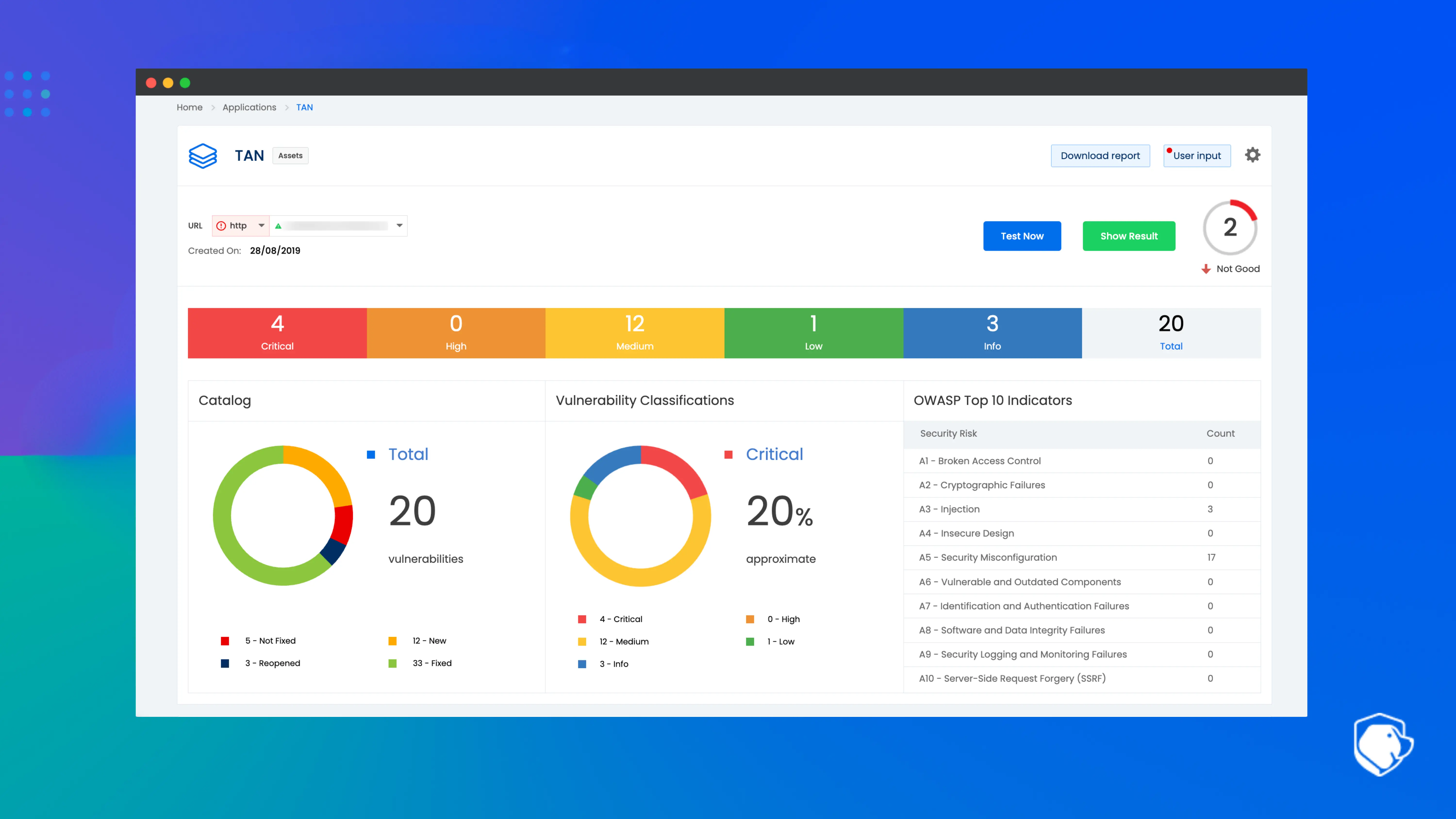
Beagle Security has emerged as one of the most developer-friendly DAST alternatives to Qualys TotalAppSec. Built with artificial intelligence at its core, it simulates real-world attacks to identify vulnerabilities in a way that traditional scanners often cannot. Unlike Qualys, which can struggle with modern frameworks,
Beagle Security is particularly effective for testing single-page applications (SPAs) and GraphQL APIs. This AI-driven approach results in fewer false positives and provides more meaningful insights that help bridge the gap between security and engineering teams.
Beagle Security key features:
AI-driven DAST with contextual attack simulations.
Business logic vulnerability detection.
Support for complex authentication and 2FA flows.
GraphQL and SPA application testing.
Native CI/CD integrations with tools like Jenkins, GitHub Actions, GitLab, and Bitbucket.
Developer-focused remediation guidance with code-level insights.
Beagle Security pricing:
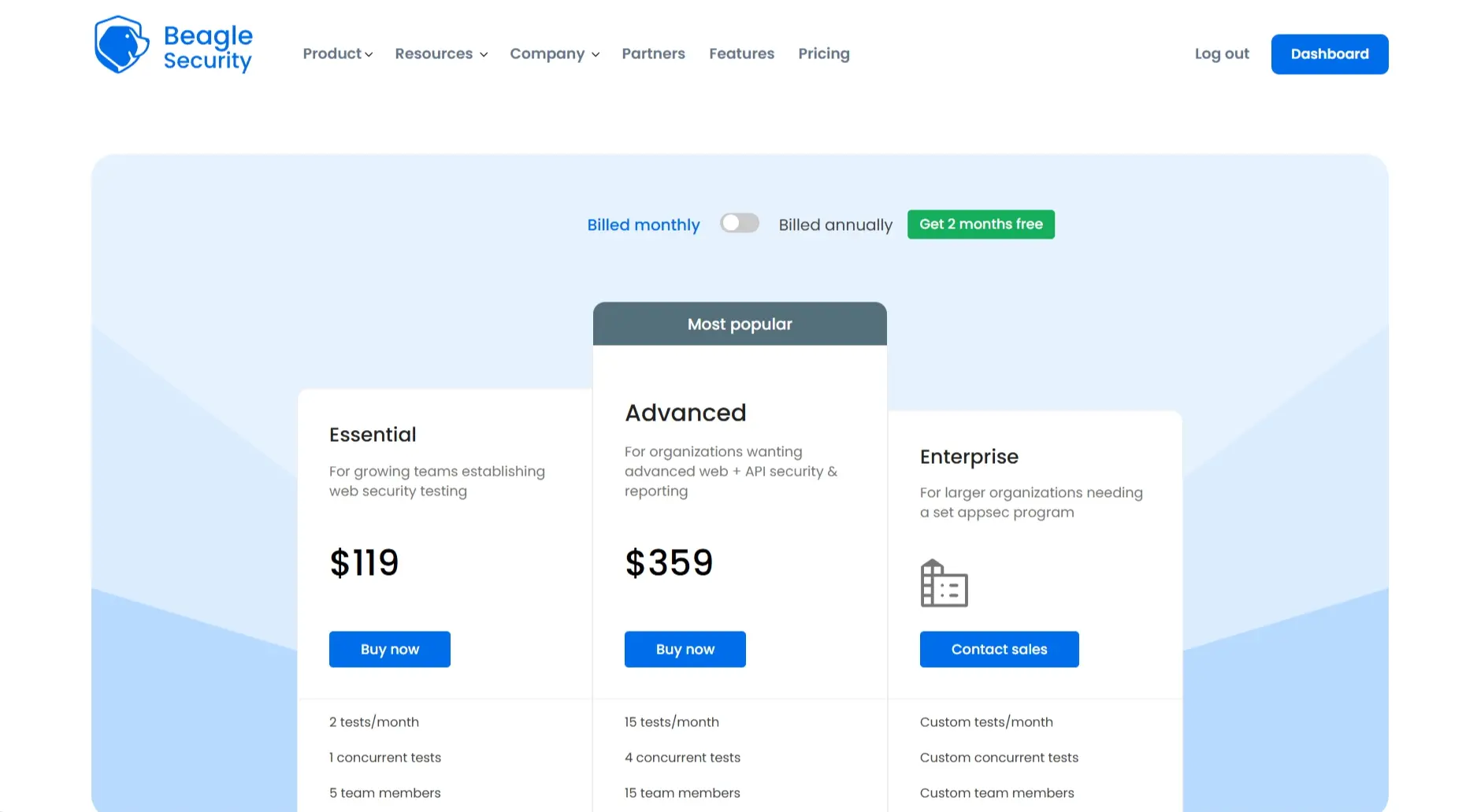
- Essential Plan: $119/month for 2 tests.
- Advanced Plan: $359/month for 15 tests.
- Enterprise Plan: Starting at $6,850/year with customized options.
Beagle Security ratings & reviews
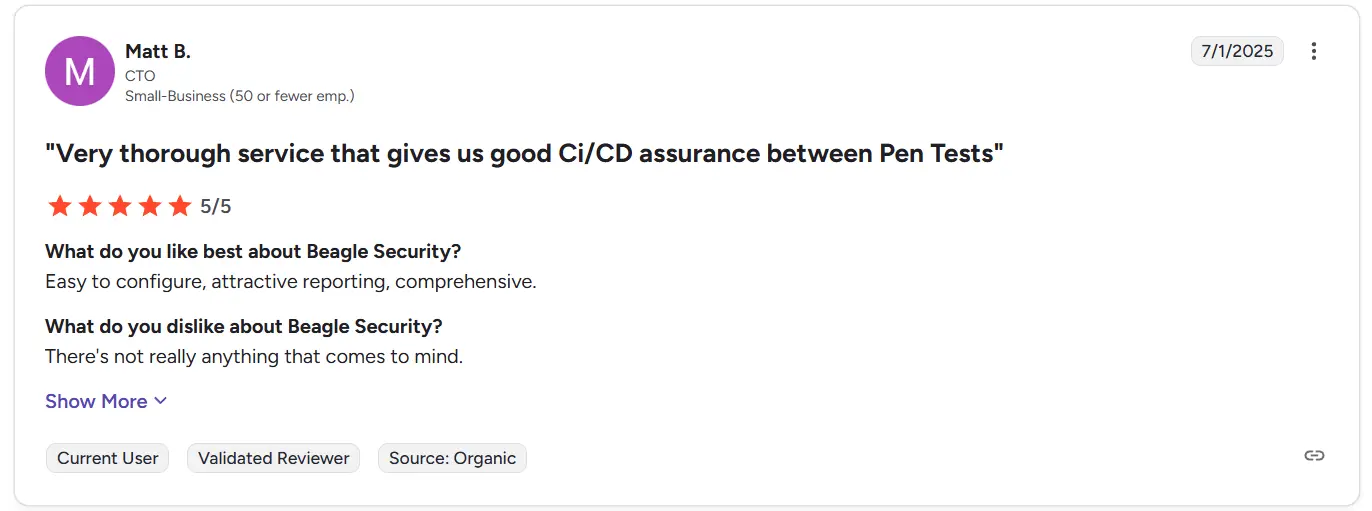
Source: G2
Beagle Security is highly rated on G2 with a score of 4.7/5 from over 50 reviews. Customers consistently highlight its ease of use (95%), ease of setup (96%), and the high quality of its support (97%). Developers especially value the platform’s intuitive dashboard and actionable reporting, which helps them remediate vulnerabilities faster without creating friction.
Invicti (formerly Netsparker)
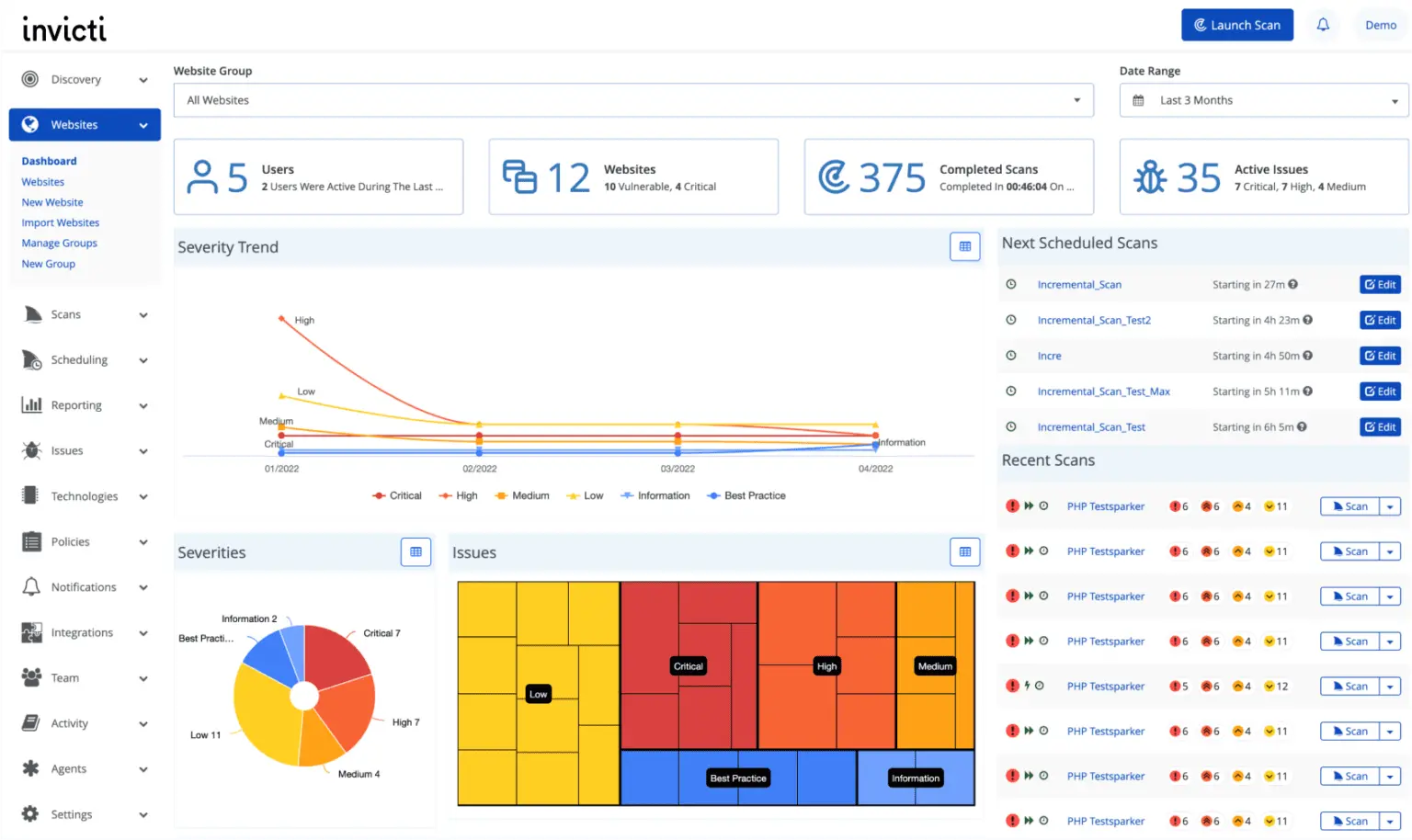
Invicti is a direct, enterprise-grade alternative to Qualys TotalAppSec, known for its strong focus on proof-based vulnerability verification. This means the scanner not only detects issues but also automatically validates them, significantly reducing the manual triage required by security teams.
The platform has expanded beyond DAST to include IAST, SCA, and ASPM features, offering end-to-end application security coverage. With its acquisition of Acunetix and Kondukto, Invicti has built a comprehensive solution designed for large organizations that require high-accuracy scanning with extensive integration capabilities.
Invicti key features:
Proof-based scanning with 99.98% accuracy claims to minimize false positives.
Broad API testing for REST, GraphQL, SOAP, and gRPC.
Over 50 CI/CD and DevOps tool integrations.
Cloud and on-prem deployment options.
Unified AppSec posture management with risk tracking.
Invicti pricing:
Invicti pricing starts at $37,000 annually.
Pricing is based on the number of domains (FQDNs), which can restrict flexibility.
Costs scale up quickly for enterprise needs and typically require a custom quote.
Invicti ratings & reviews

Source: G2
Invicti holds a 4.6/5 rating on G2 from over 100 reviews. Customers appreciate its industry-leading accuracy and detailed reporting features. However, common concerns cited by users include rising prices and licensing models that can be complex and difficult to manage.
Cloud security (Qualys CSPM alternatives)
Introduction to Qualys CSPM: Pros and limitations
Qualys Cloud Security Posture Management (CSPM) is the company’s offering for securing cloud environments. It is designed to provide visibility into cloud workloads, identify misconfigurations, and help organizations maintain compliance. It integrates with the broader Qualys platform, allowing teams to manage cloud security alongside other vulnerabilities.
Strengths of Qualys CSPM include:
Unified platform: It is part of the integrated Qualys security portfolio, allowing for a single-vendor approach.
Multi-cloud support: Offers visibility across major cloud providers, which is essential for hybrid environments.
Limitations include:
Traditional deployment: Relies on more traditional deployment methods, which can be more complex compared to modern agentless solutions.
Alert fatigue: Without advanced, context-aware risk prioritization, teams can become drowned in alerts that don’t represent genuine business risks.
Lack of full visibility: Agent-based or traditional methods may not achieve the 100% workload coverage offered by newer technologies.
Orca Security
Orca Security pioneered the agentless approach to cloud security with its patented SideScanning technology, setting it apart from Qualys’s more traditional methods. This technology provides 100% visibility into cloud workloads across AWS, Azure, and GCP without any performance overhead.
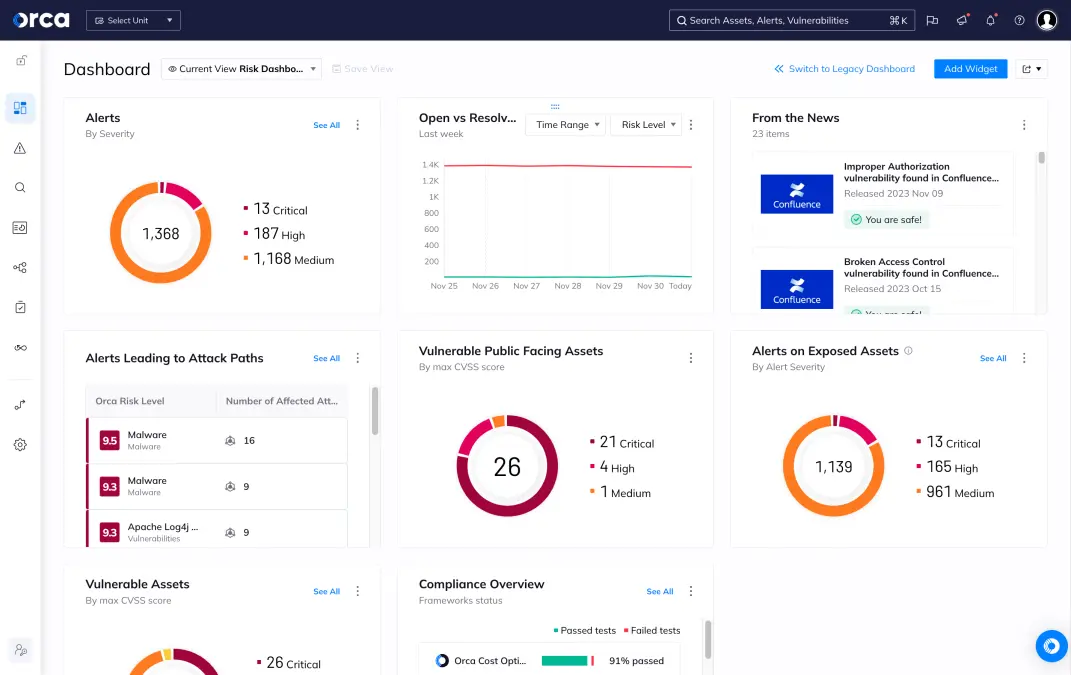
Orca’s greatest strength is its context-aware risk prioritization, which blends workload intelligence with configuration data to surface only the most critical attack paths and vulnerabilities. This focus on reducing alert noise makes it a powerful alternative for organizations operating primarily in the public cloud.
Orca Security key features:
Agentless SideScanning for 100% workload coverage without performance impact.
Support across AWS, Azure, and GCP.
Unified risk management across CSPM, CWPP, CIEM, and DSPM.
Attack path analysis to identify and prioritize high-risk combinations of issues.
Compliance automation for over 80 industry frameworks.
Orca Security pricing:
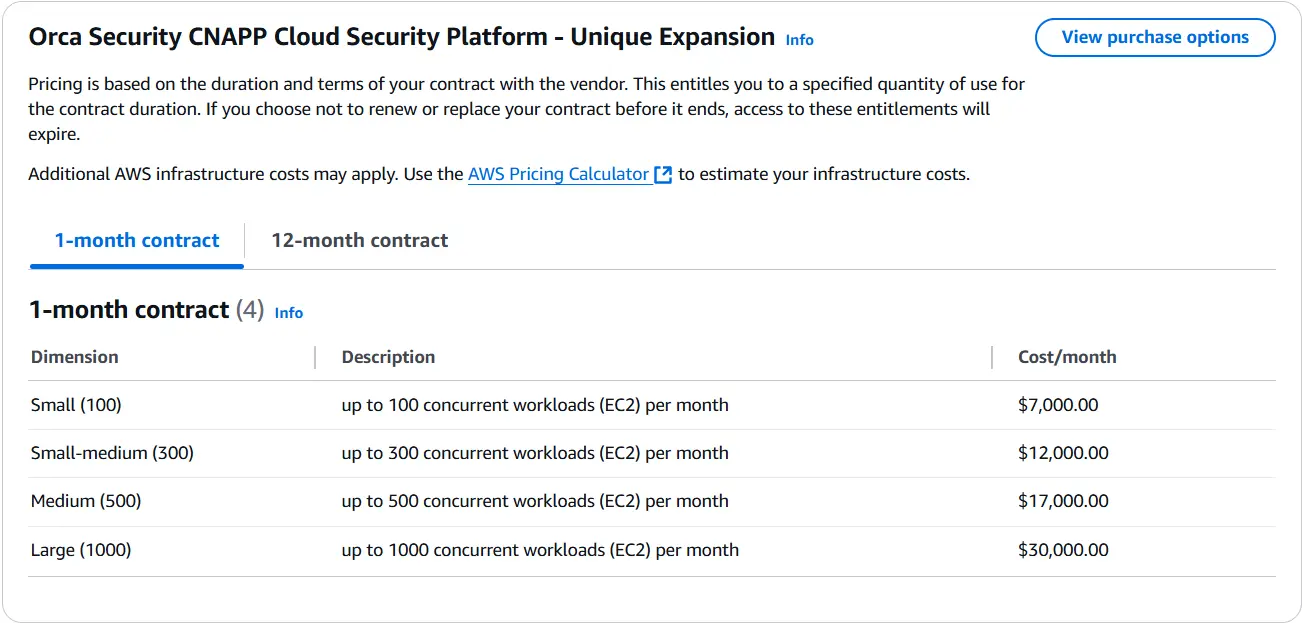
Source: AWS Marketplace
Orca Security uses workload-based pricing.
Starter packages begin around $7,000/month, scaling to $30,000+/month for large deployments.
Annual costs can range from $84,000 to $360,000 depending on workload count.
Orca Security ratings & reviews:
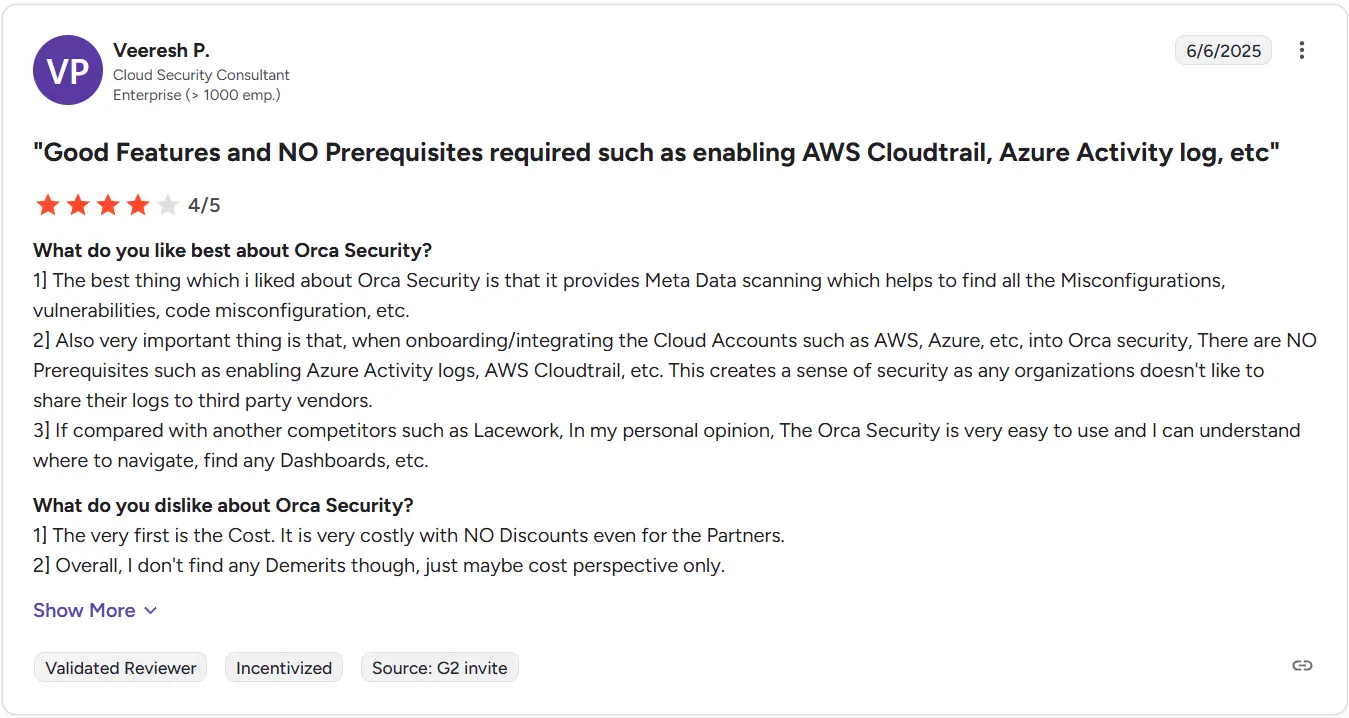
Source: G2
Orca Security holds a 4.6/5 rating on G2 from over 220 reviews. Users consistently highlight its ease of use and the instant visibility it provides, with many reviewers praising the reduced setup complexity compared to agent-based solutions like Qualys.
Prisma Cloud
Prisma Cloud by Palo Alto Networks is a complete Cloud-Native Application Protection Platform (CNAPP) that offers one of the most comprehensive security solutions on the market. It provides code-to-cloud coverage, securing applications across the entire development lifecycle, making it a powerful alternative for enterprises looking to consolidate multiple security tools into one.
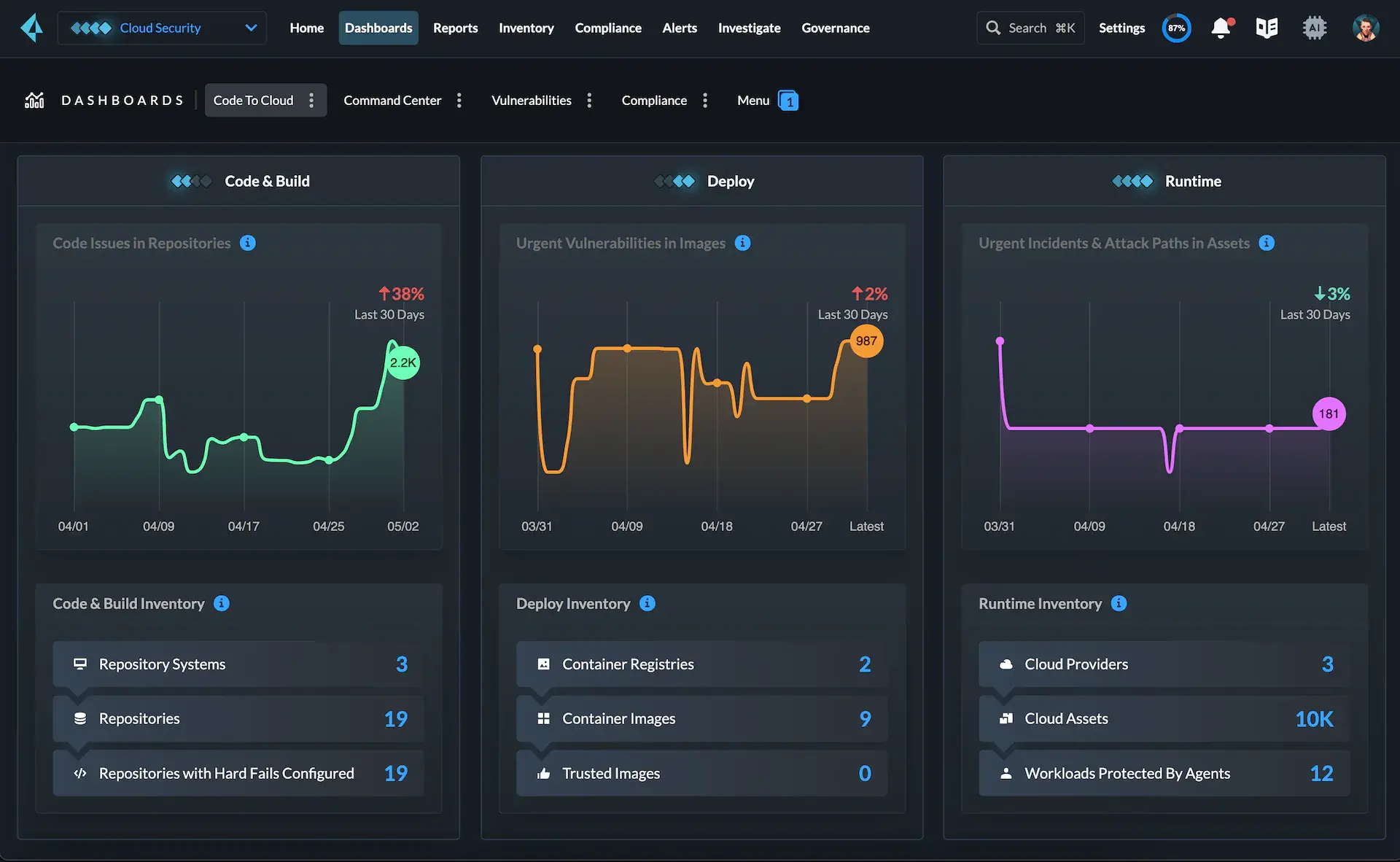
Prisma Cloud offers perhaps the broadest multi-cloud support, covering AWS, Azure, GCP, Oracle, Alibaba, and IBM. For enterprises that need an all-in-one platform with advanced compliance and monitoring, Prisma Cloud is a leading choice.
Prisma Cloud key features:
End-to-end CNAPP: CSPM, CWPP, CAS, DSPM, and CIEM.
Coverage across six major cloud providers.
Runtime protection for containers and serverless applications.
AI-driven threat detection (Precision AI).
Real-time compliance monitoring and attack path analysis.
Prisma Cloud pricing:
Prisma Cloud pricing starts at around $18,000 annually for 100 credits.
Costs vary based on the modules selected and the scale of the deployment.
Enterprise deployments require a custom quote.
Prisma Cloud ratings & reviews
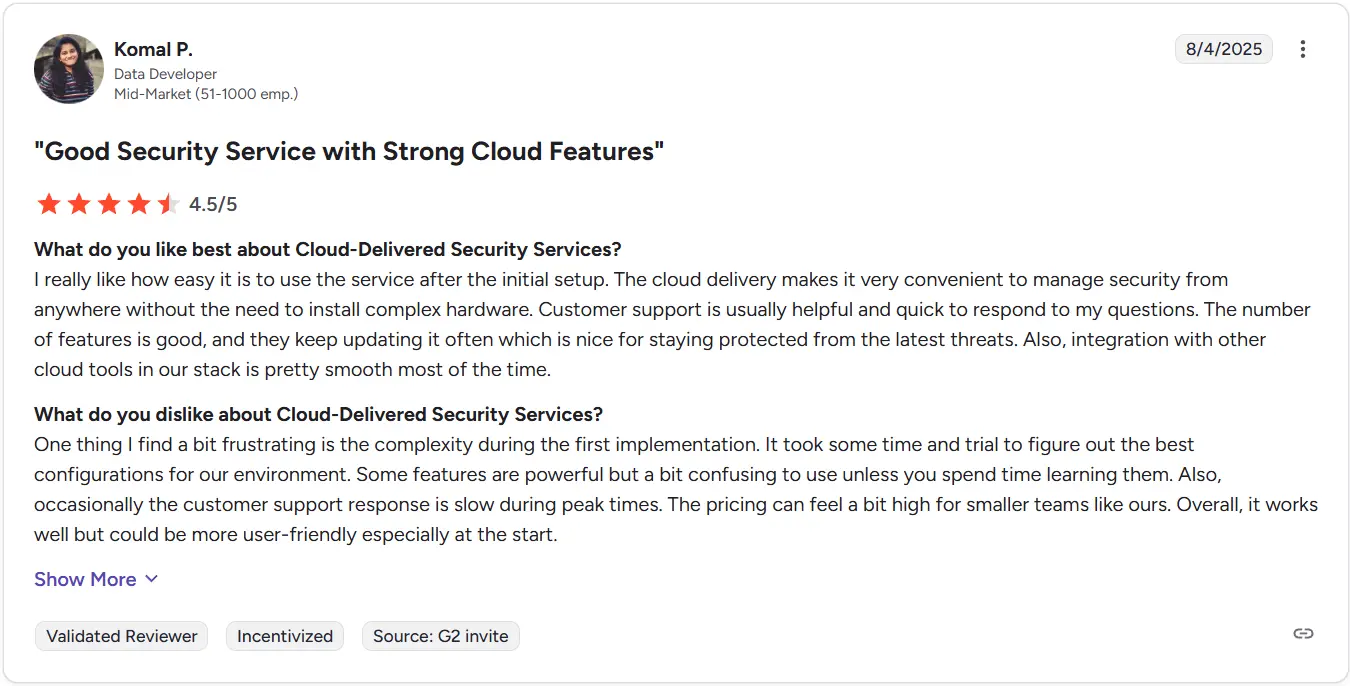
Source: G2
Prisma Cloud scores 4.4/5 on G2 with over 100 reviews. Customers value its comprehensive, all-in-one coverage, but also note its complexity and steep learning curve. Its feature set, while powerful, can sometimes be overwhelming for smaller teams.\
Vulnerability management (Qualys VMDR alternatives)
Introduction to Qualys VMDR: Pros and limitations
Qualys VMDR (Vulnerability Management, Detection, and Response) is one of the industry’s most well-known vulnerability management solutions. It provides asset discovery, vulnerability scanning, and prioritization capabilities. It is built on the company’s long-standing reputation in the VM space and serves as a core component of its security platform.
Strengths of Qualys VMDR include:
Established reputation: As a major player, it is a trusted and recognized name in vulnerability management.
Integrated platform: Connects with other Qualys tools for a unified view of risk.
Limitations include:
Reliance on CVSS: The platform heavily relies on the traditional CVSS scoring system, which lacks the real-time threat intelligence of more modern prioritization models. This can lead to alert fatigue.
- Performance issues: At enterprise scale, users may experience slower scan performance and challenges with tuning the system for large, complex environments.
- High costs: The licensing and total cost of ownership can be significant, especially for growing organizations.
Rapid7 InsightVM
Rapid7 InsightVM is one of the strongest direct alternatives to Qualys VMDR, designed specifically for modern hybrid IT environments. Its key differentiator is the proprietary Active Risk scoring system, which uses machine learning and real-time threat intelligence to identify vulnerabilities most likely to be exploited.
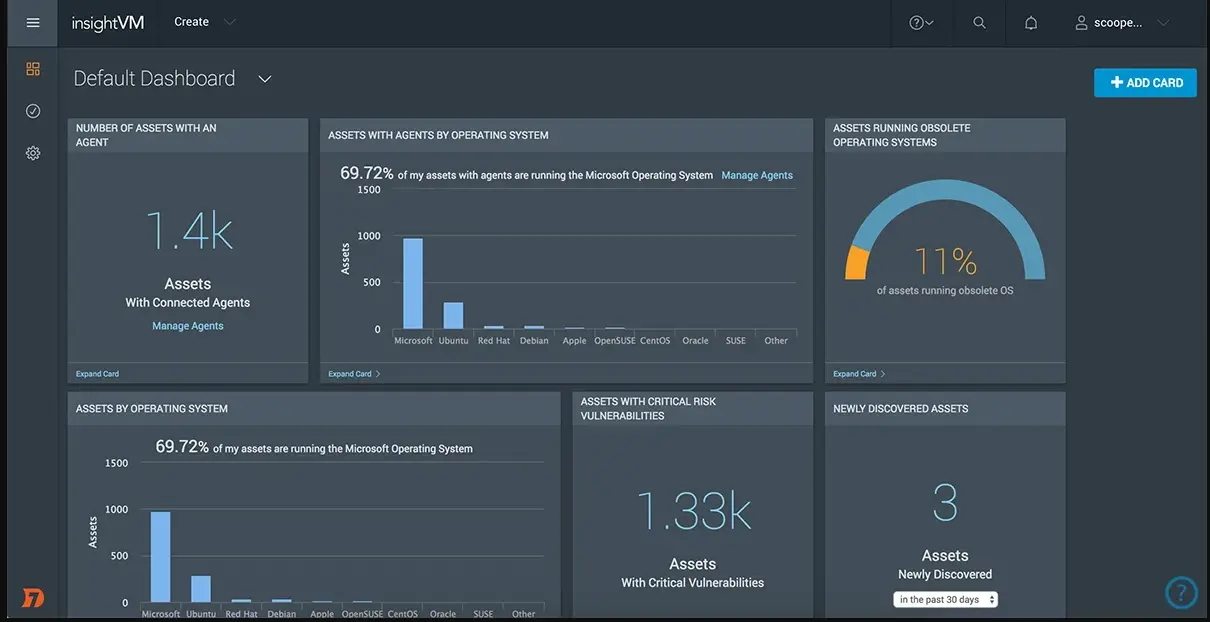
Unlike Qualys’s reliance on static CVSS scores, this approach helps teams cut through alert fatigue and focus on the risks that truly matter. With live dashboards and over 500 integrations, InsightVM is built for proactive vulnerability management and automated remediation workflows.
Rapid7 InsightVM key features:
Real-time asset discovery and classification.
Threat-aware vulnerability prioritization using Active Risk scoring.
500+ integrations with IT and security tools for automation.
Automated remediation workflows with SLA tracking.
Live dashboards for both executive and technical visibility.
Rapid7 InsightVM pricing:
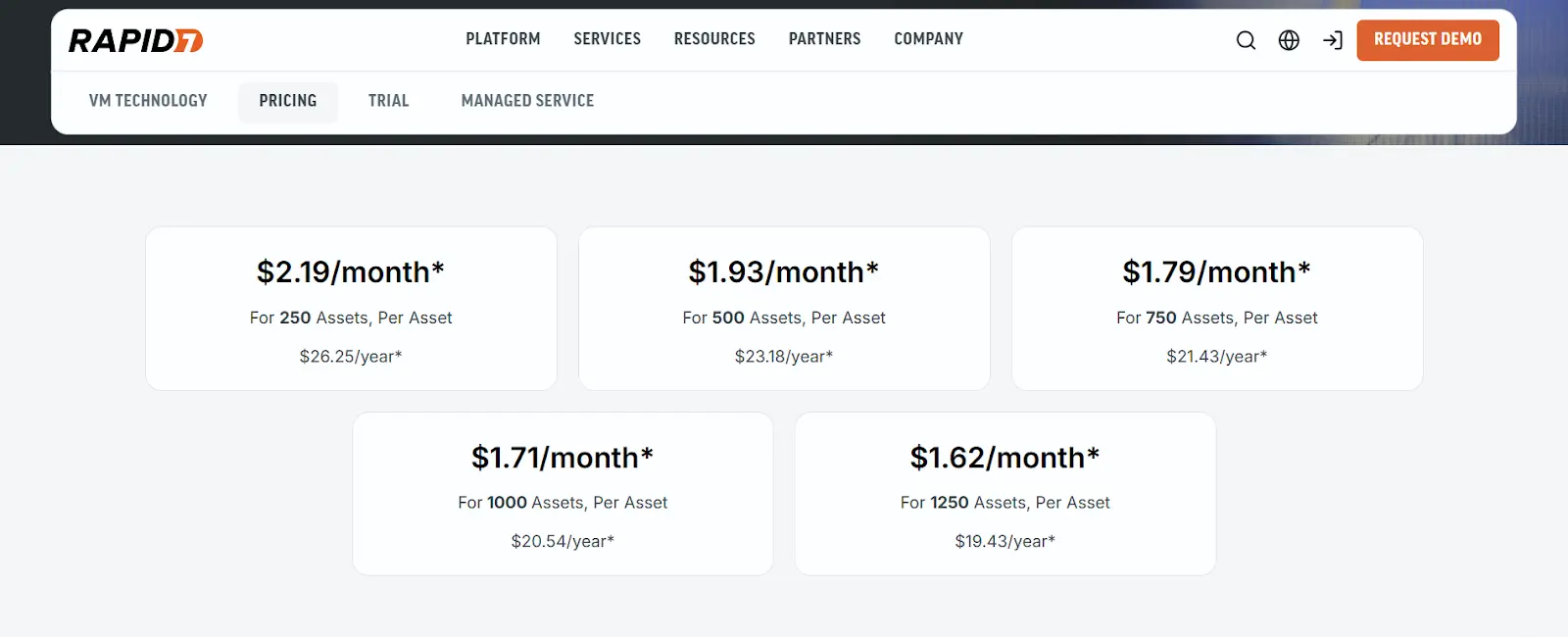
Rapid7 InsightVM starts at $1.62 per asset per month.
Enterprise deployments can easily exceed $100,000 annually.
Rapid7 InsightVM ratings & reviews
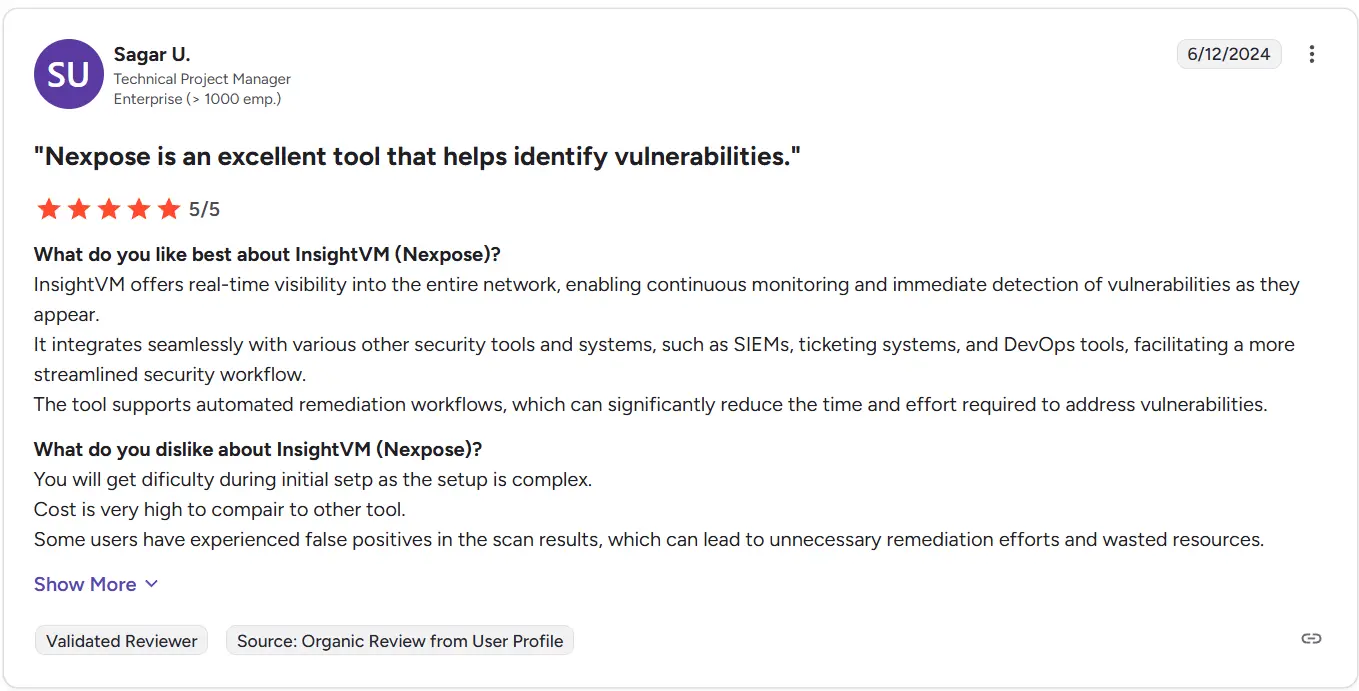
Source: G2
InsightVM is rated 4.3/5 on G2 from over 800 reviews. Customers appreciate the visual dashboards and extensive integrations. However, some users highlight a significant learning curve for advanced features and potential scan performance issues in very large-scale setups.
Tenable
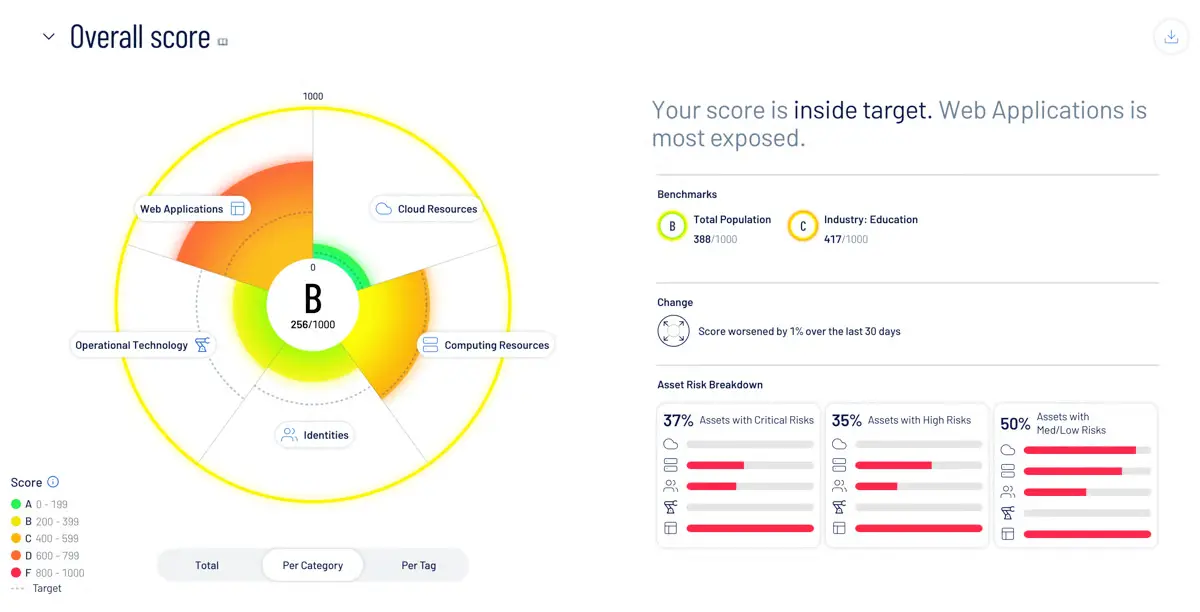
Tenable is often seen as Qualys’s biggest rival in the vulnerability management space. Tenable differentiates itself with its Vulnerability Priority Rating (VPR) system, which, like Rapid7’s model, uses real-world threat data and machine learning for more intelligent prioritization than CVSS.
Tenable boasts one of the most extensive vulnerability coverage ranges in the industry, with over 77,000 CVEs covered by more than 186,000 plugins. This makes it a powerful choice for organizations needing comprehensive visibility across IT, cloud, and OT environments.
Tenable key features:
Broad coverage with an industry-leading plugin library.
VPR system for context-aware, intelligent prioritization.
Continuous asset discovery and monitoring.
Support for multi-cloud and OT environments.
Compliance and audit reporting across major standards.
Tenable pricing:
Tenable.io starts at $2,275 annually for 65 assets.
Tenable.sc (on-prem) begins around $5,000 annually for 130 assets.
Large enterprise packages like Tenable One typically start above $50,000 annually.
Tenable ratings & reviews
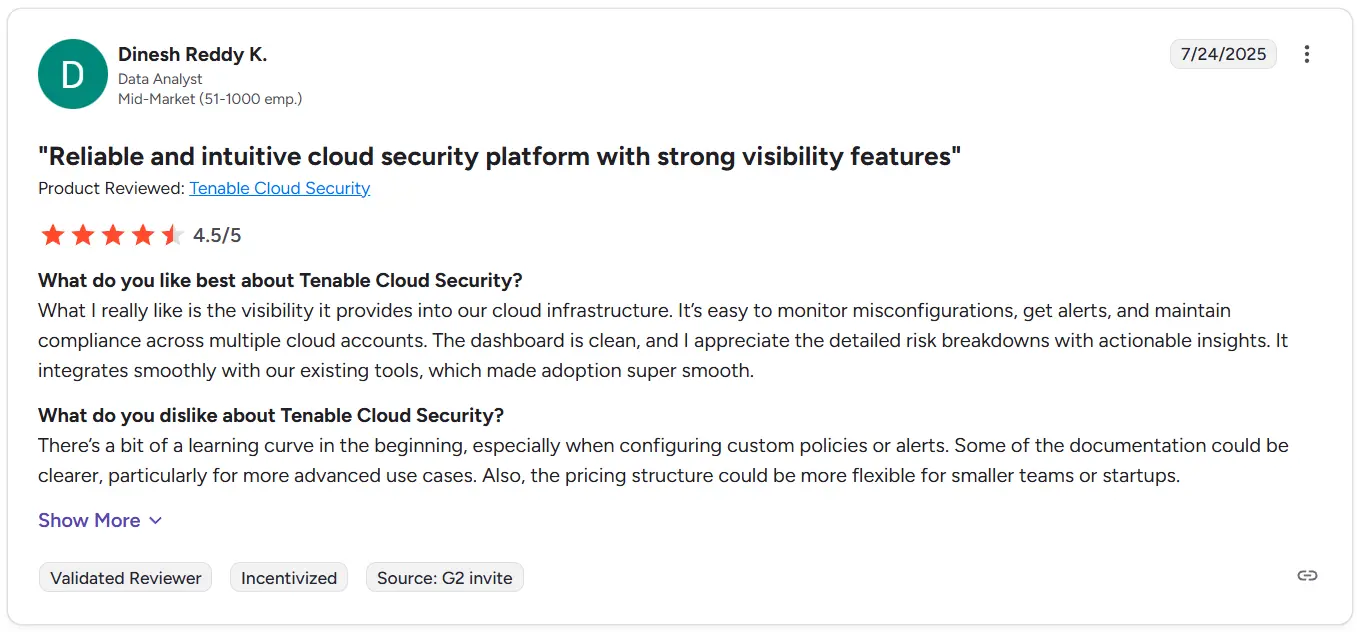
Source: G2
Tenable scores 4.5/5 on G2. Customers praise its comprehensive coverage and powerful dashboards. Some common criticisms include lengthy scan times and complexity in setting up the platform at scale, especially in hybrid environments.
Patch management (Qualys Patch Management alternatives)
Introduction to Qualys Patch Management: Pros and limitations
Qualys Patch Management is an integrated solution within the Qualys platform designed to automate the patching process. It aims to help IT and security teams identify missing patches and deploy them from the same console they use for vulnerability management, creating a streamlined workflow from detection to remediation.
Strengths of Qualys Patch Management include:
Integrated workflow: It is part of the broader VMDR solution, allowing teams to manage patching within the same ecosystem.
Centralized control: Offers a single platform for identifying vulnerabilities and deploying patches.
Limitations include:
Platform focus: The solution may not be as robust or easy to use for specific operating systems (like Windows) compared to specialized tools.
Cost and complexity: As part of a larger enterprise suite, it may be more expensive and complex than necessary for teams whose primary need is simple, effective patching.
Limited endpoint management: It lacks the broader endpoint management capabilities (remote access, scripting, documentation) found in modern RMM platforms.
PDQ
PDQ has long been a trusted and beloved name in Windows patch management. It is known for its simplicity, reliability, and affordability, making it highly effective for organizations running Windows-heavy environments.
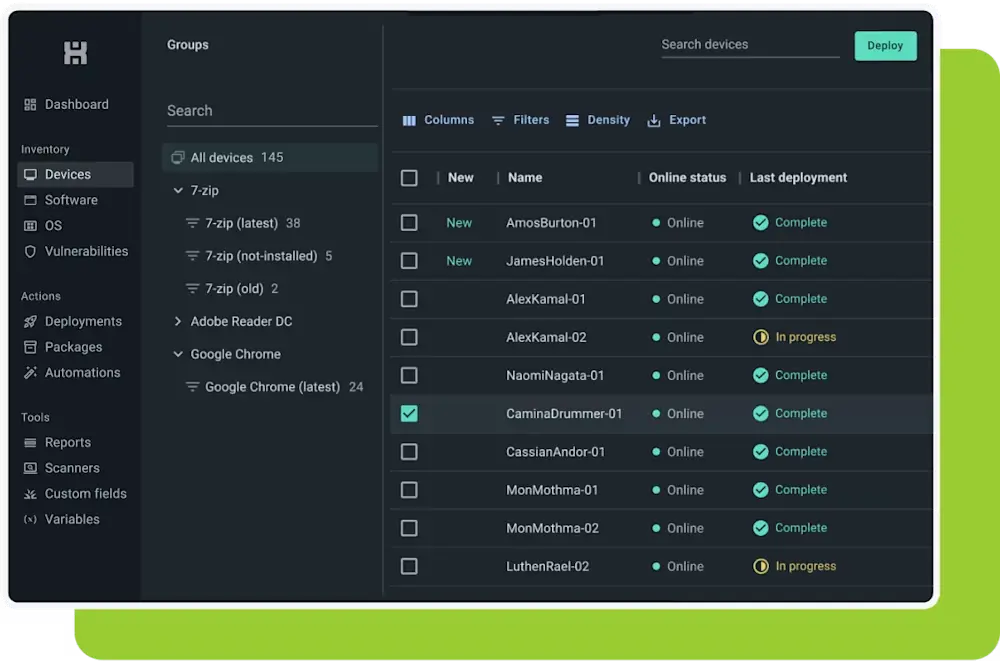
With both on-premise (PDQ Deploy & Inventory) and cloud (PDQ Connect) solutions, it offers a library of over 200 pre-configured applications for automated updates, saving IT teams countless hours of manual work. For Windows-focused teams seeking an automated, no-nonsense patching tool, PDQ is a top alternative.
PDQ key features:
Automated Windows patching.
200+ pre-configured third-party applications.
Seamless Active Directory integration.
Custom deployment workflows and intelligent device grouping.
Offline device patching with heartbeat triggers.
PDQ pricing:
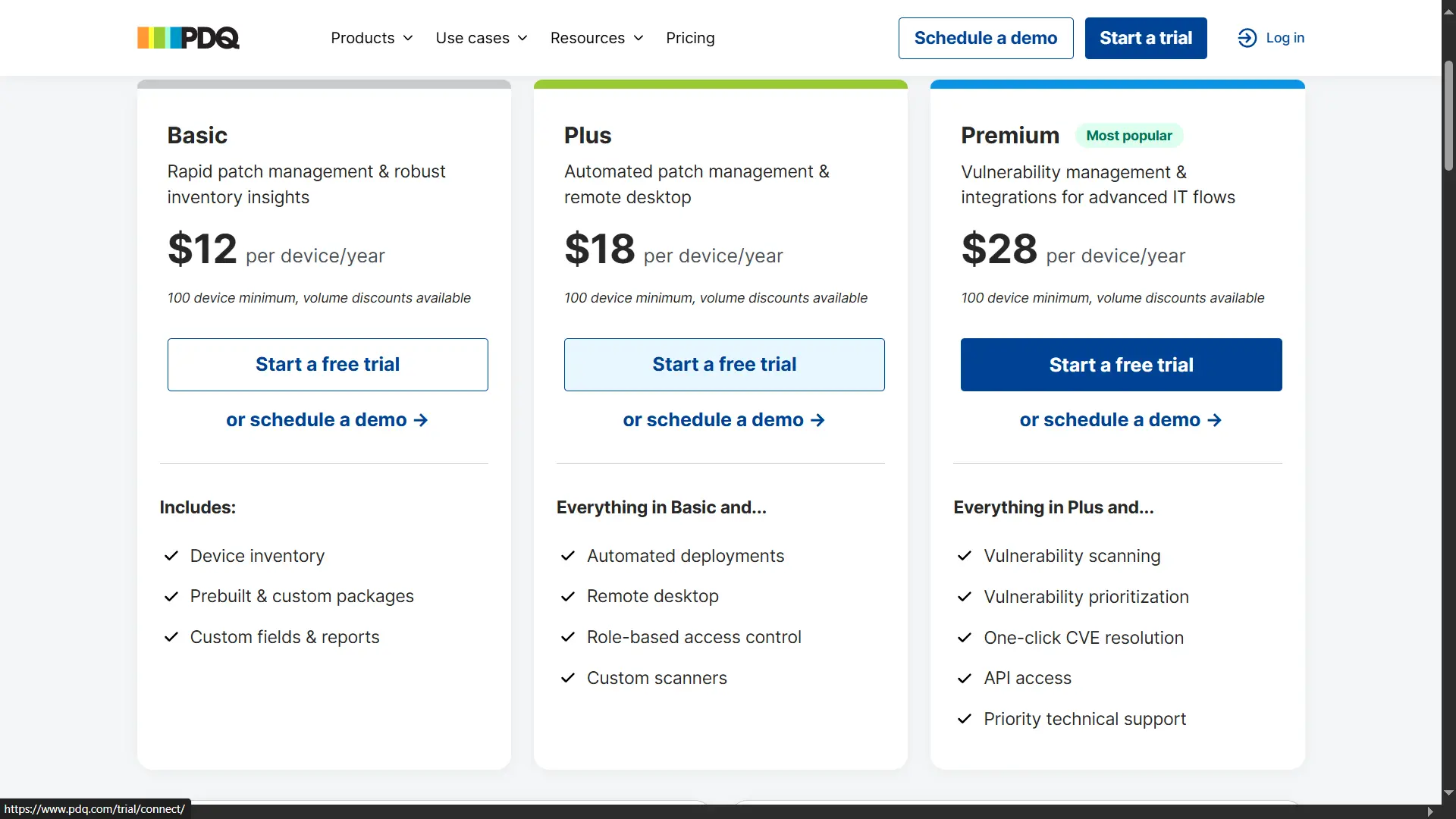
PDQ Connect: Starts at $12/device/year, with higher tiers from $18–$28/device/year.
PDQ Deploy & Inventory (on-prem): Around $1,200–$1,500 annually.
PDQ ratings & reviews
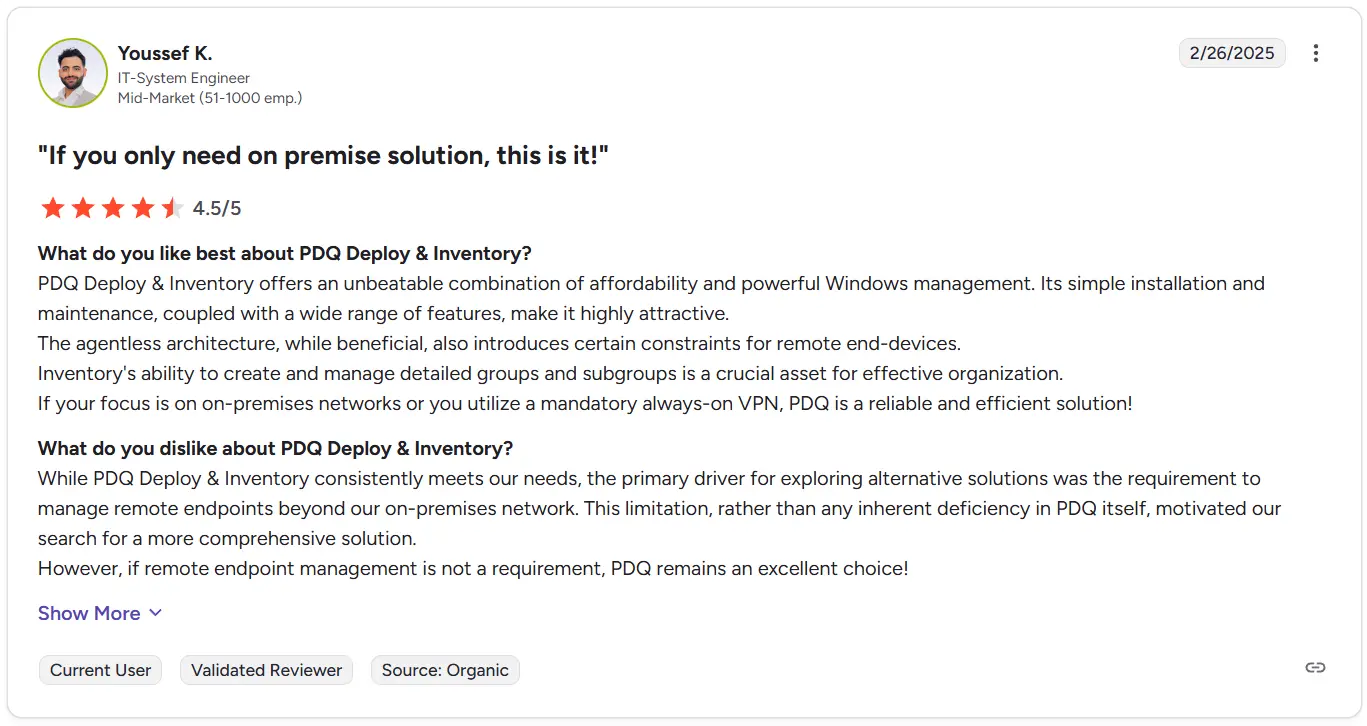
Source: G2
PDQ is rated an exceptional 4.8/5 on G2 from over 200 reviews. Customers overwhelmingly praise its simplicity and cost-effectiveness, with 95% stating they would recommend the product.
NinjaOne
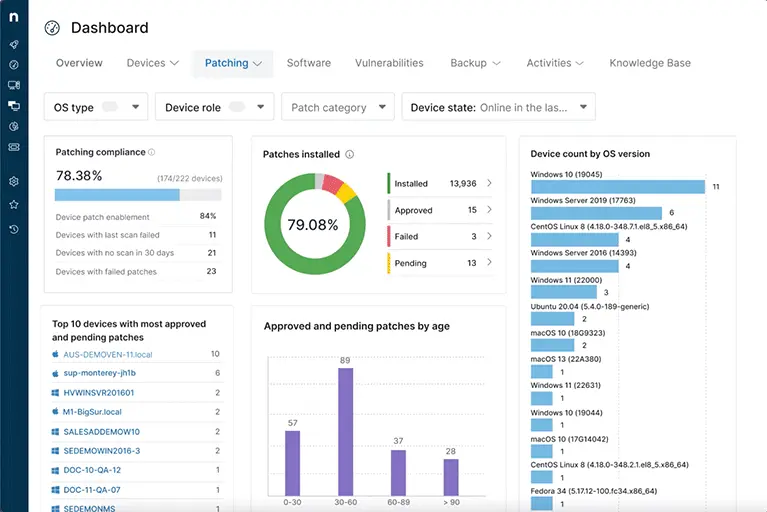
NinjaOne has quickly become one of the top-rated endpoint management platforms, going far beyond simple patching. Unlike the Windows-focused PDQ, NinjaOne provides versatile coverage for Windows, macOS, and Linux, making it ideal for mixed environments. It offers real-time monitoring, AI-powered patch intelligence, and a full suite of endpoint management features, including remote access, automated scripting, and IT documentation. For MSPs and IT teams needing a comprehensive platform to manage all their endpoints, NinjaOne is more than just a patching tool; it’s a complete solution.
NinjaOne key features:
Multi-platform patch management (Windows, Linux, macOS).
AI-driven patch intelligence.
Real-time monitoring and alerting.
Remote access and mobile device management.
Automated scripting, remediation, and built-in IT documentation.
NinjaOne pricing:
NinjaOne uses a tiered, per-endpoint pricing model.
It starts at $1.50/endpoint/month for 10,000+ endpoints.
Pricing can go up to $3.75/endpoint/month for smaller deployments.
NinjaOne ratings & reviews
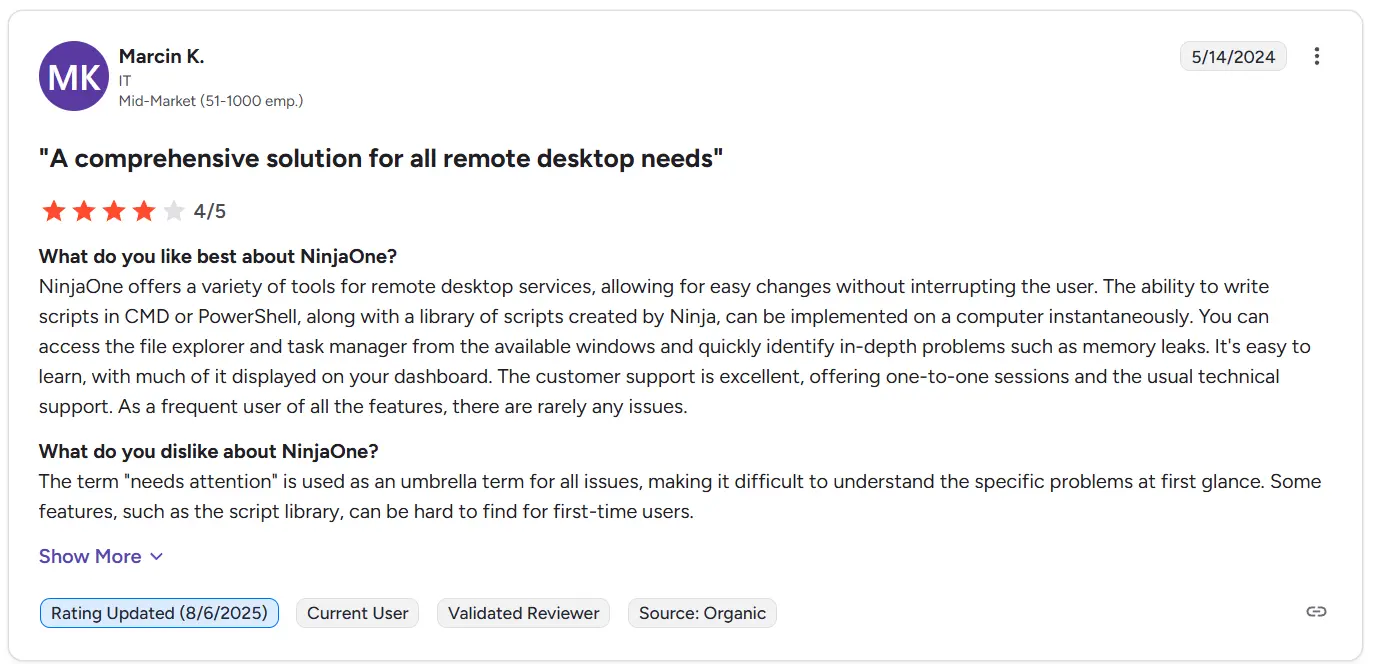
Source: G2
NinjaOne boasts an outstanding 4.9/5 rating on G2 from over 2,700 reviews. Users consistently give it top marks for ease of use (94%), ease of setup (94%), and its excellent customer support, making it one of the best-loved tools in the IT management space.
Key factors to consider when choosing the right Qualys alternative
When evaluating alternatives, organizations should weigh several factors beyond just features and price. The right choice depends on a careful assessment of your team’s specific needs, existing workflows, and long-term goals.
Specific use case needs: Your primary challenge should guide your choice. Application testing, vulnerability management, cloud posture, and patch management all require different toolsets. For modern web app security, a developer-first DAST tool like Beagle Security is a better fit than a general VM scanner. For agentless cloud security, Orca Security is more specialized than a traditional CSPM.
Integration and automation: A security tool should reduce friction, not create it. Ensure the platform fits smoothly into your existing workflows, whether it’s CI/CD pipelines for developers or ITSM platforms for IT operations. Strong integration is key to achieving efficient automation and a mature DevSecOps culture.
Ease of use: Complex tools with a steep learning curve often see lower adoption and fail to deliver their full value. Prioritize platforms with intuitive dashboards, clear documentation, and actionable reports. A tool that is easy to use is more likely to be fully utilized by your team.
Scalability and performance: The solution you choose must be able to scale with your organization’s assets and workloads without creating performance bottlenecks. Ensure the tool can support your future growth, whether you’re a fast-growing startup or a large enterprise with a global footprint.
Support and training: High-quality vendor support and comprehensive training resources can make or break an implementation. Look for vendors known for excellent customer service, as this can be invaluable during onboarding and for resolving issues quickly.
Total cost of ownership: Look beyond the license fee. Consider the total cost of ownership, which includes expenses for training, staffing, and potential scaling costs over time. A cheaper tool may end up costing more in the long run if it requires significant manual effort or specialized personnel to manage.
Final thoughts: Choosing the best Qualys alternative in 2025
The cybersecurity landscape in 2025 offers a rich variety of powerful and specialized alternatives to Qualys. While Qualys remains a major player, it is not always the most cost-effective, user-friendly, or modern solution for every organization’s needs.
For application security, platforms like Beagle Security and Invicti deliver more accurate, developer-friendly DAST capabilities that are better suited for modern web apps and APIs.
For vulnerability management, Rapid7 and Tenable offer more advanced prioritization models that leverage real-time threat intelligence to reduce alert fatigue and focus teams on what matters most.
For cloud security, Orca Security provides deep, agentless visibility, while Prisma Cloud offers a comprehensive, all-in-one CNAPP for large enterprises.
For patch management, PDQ offers unmatched simplicity for Windows environments, and NinjaOne provides a complete endpoint management solution for multi-OS fleets.
Ultimately, security teams should map their specific requirements and select the tool that best aligns with their priorities for usability, automation, scalability, and budget.
FAQs: Qualys alternatives and competitors
Q1. Why should organizations consider Qualys alternatives?
Organizations seek alternatives due to factors like budget constraints, tool complexity, and the need for more modern, developer-friendly, or specialized cloud-native solutions.
Q2. Our applications use modern frameworks like SPAs and GraphQL. Can alternatives to Qualys handle these effectively?
Yes, this is a key reason many teams seek alternatives. While older platforms may under-test these technologies, modern DAST tools like Beagle Security are particularly effective for testing single-page applications (SPAs) and GraphQL APIs.
Q3. Which Qualys alternative is best for agentless cloud security?
Orca Security is a leading alternative for agentless cloud security, using its SideScanning technology to provide 100% visibility without the overhead of agents.
Q4. What is a good, affordable alternative for Windows patch management?
PDQ is a highly rated and cost-effective alternative known for its simplicity and reliability in Windows-heavy environments.
Q5. Do Qualys alternatives integrate with DevSecOps pipelines?
Yes, many modern alternatives are built for DevSecOps. Platforms like Beagle Security offer native CI/CD integrations to fit smoothly into developer workflows.
![Top 20 cybersecurity consulting firms [2025] Top 20 cybersecurity consulting firms [2025]](https://beaglesecurity.com/blog/images/blog-banner-two-840.webp)

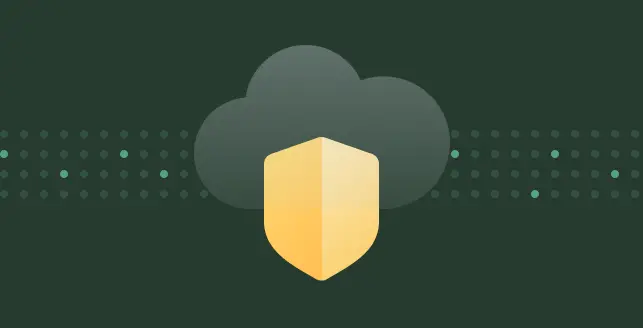

![Top 10 penetration testing companies [2025] Top 10 penetration testing companies [2025]](https://beaglesecurity.com/blog/images/blog-banner-three-840.webp)
